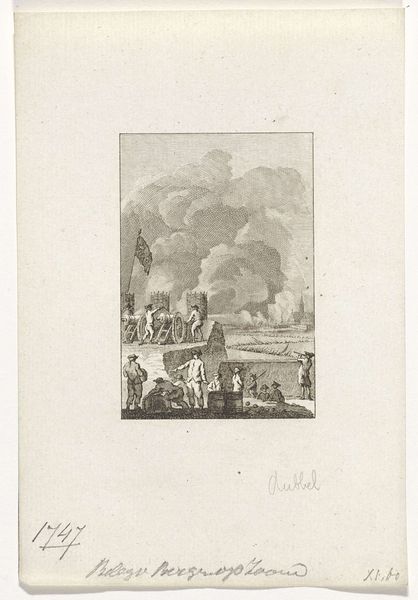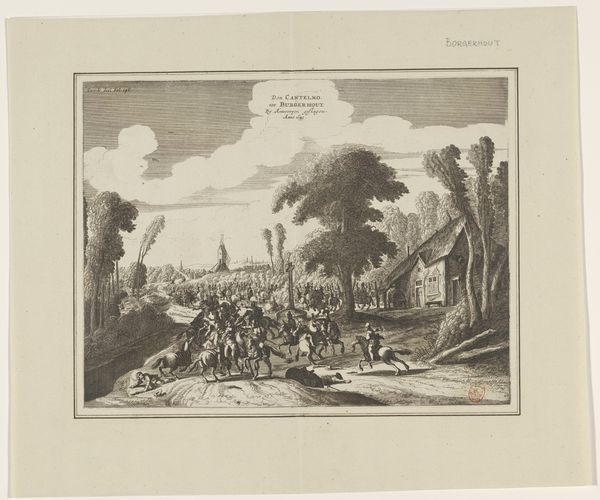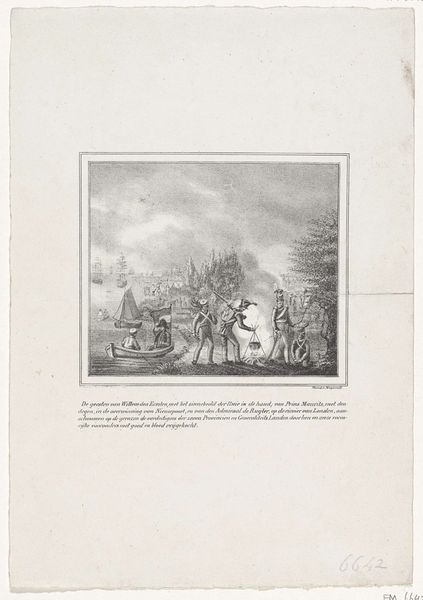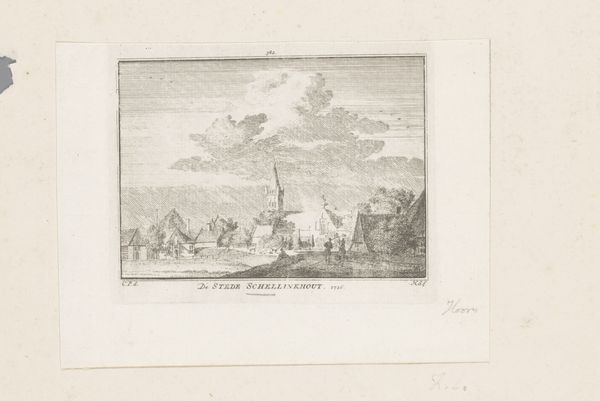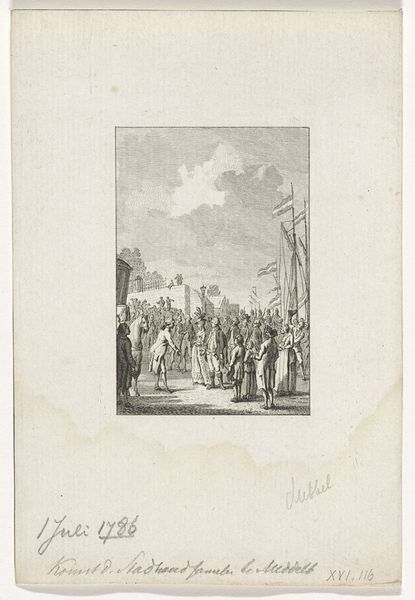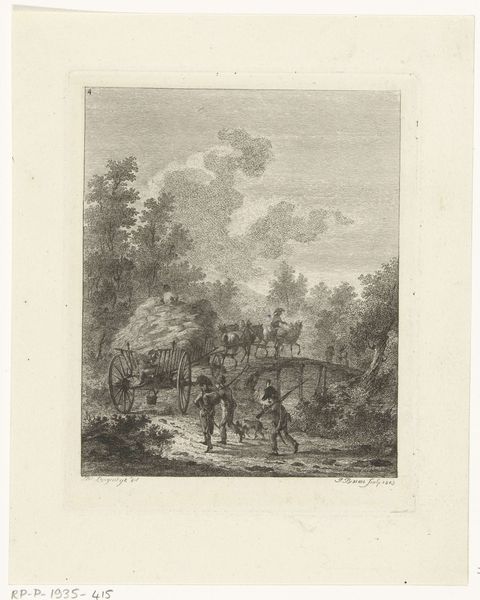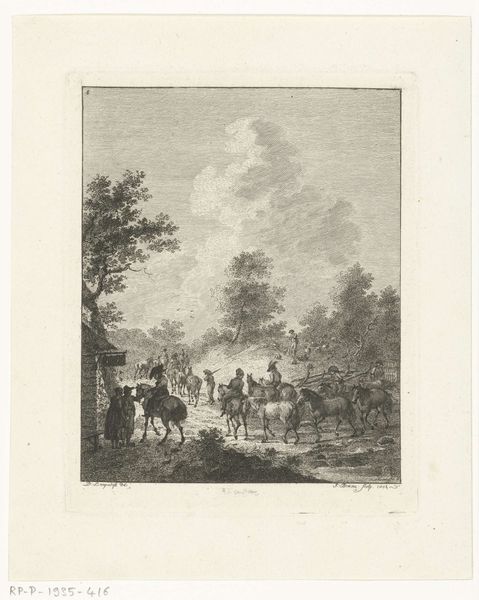
print, etching, engraving
#
aged paper
#
neoclassicism
# print
#
etching
#
light coloured
#
old engraving style
#
white palette
#
cityscape
#
history-painting
#
engraving
Dimensions: height 127 mm, width 100 mm
Copyright: Rijks Museum: Open Domain
Curator: Welcome. This etching, entitled 'Pruisen beschieten Gorinchem, 1787,' by Reinier Vinkeles, dating from between 1787 and 1795, captures a stark scene. What strikes you first? Editor: The desaturated palette really stands out— almost spectral. The cloud of smoke dominating the composition immediately conveys a sense of chaos and destruction looming over the orderly cityscape. Curator: Indeed. Vinkeles uses line to define form here, very much in the Neoclassical style. Note the clean, precise details in the architecture contrasting sharply with the more chaotic rendering of smoke and fire. It’s a visual study in contrasting textures, would you agree? Editor: I agree. And beyond its technical execution, the work acts as a visual document, a piece of political commentary depicting the Prussian army bombarding the Dutch city of Gorinchem. What social and political power dynamics are at play here? The city being under attack makes me consider ideas of nationalism and state violence. Curator: Precisely! Vinkeles compels us to consider the cost of political power. His deliberate formal choices highlight the clash between order and chaos. It’s all meticulously laid out for consideration by the viewer, no? Editor: Very true, the work clearly documents the invasion of the Dutch Republic, offering insights into a specific event, but the representation of war has always been inherently complex. Here, it reminds me to confront these uncomfortable narratives through historical representation. The deliberate and clean-cut style, especially the near pristine state the print is in now, jars with the subject depicted in it, a violent historical episode. Curator: Well said! It provides, ultimately, a compelling glimpse into the socio-political climate of the late 18th century. Editor: I concur. Its somber quality compels us to ask questions about those who write history and, perhaps more importantly, about those written out of it.
Comments
No comments
Be the first to comment and join the conversation on the ultimate creative platform.

